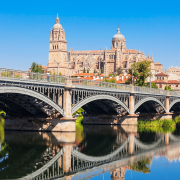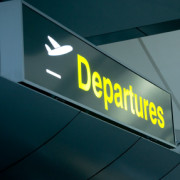Europe Travel Guide Tips for a Hassle-free Adventure
Europe Travel Guide Tips — Try These for Hassle-free Adventure across the Old Continent
Europe has a little bit of something for everyone. One of the most diverse continents, Europe not only has a deep-rooted history but is also a melting pot of cultures from across the globe. From its east end to its west side, Europe is a mixture of unique architecture, varied cuisines, languages, cultures, and customs. With the dissolution of border checks within the European Union (EU), traveling from one country to another is quite easy and also affordable. So get your backpack ready with our Europe travel guide tips to sojourn around this Old Continent to your heart’s content.
How to Get Around Europe?
To make the most of your stay, follow this Europe travel guide tips:
Natural Beauty to Architectural Wonders — Things to See and Do in Europe
The busy cities of Europe are full of architectural marvels that represent the ancient religion that existed as well as the culture and civilization of the continent. Every movement that Europe went through is reflected in its architecture. Gothic, Neo-Classical, Medieval, Renaissance and Restoration — all exist as emblems of European history. Some of the cities you can visit for their architecture are London, Berlin, Barcelona, Rome, and Paris.
No one does museums as well as Europe. Some of the world’s most beautiful museums are found here that narrate the history of civilization from the first fossils that took shape ages ago to contemporary art. The must-see museums include the British Museum (London), the very modern Pompidou Center (Paris), the Rijksmuseum (Amsterdam), The Louvre (Paris), Prado (Madrid), The National Gallery (London), The Museum of Broken Relationships (Zagreb), and the Tate Modern (London).
Europe is also one of the few continents that attract visitors for Christmas. Hordes of travelers descend on European cities to explore their Christmas markets and celebrations. Christmas atmosphere in Europe is filled with twinkling lights and decorations, carol singing and concerts, midnight masses, and lots of holiday cheer and shopping. The cities of Strasbourg, Prague, London, Vienna, Rovaniemi, and Milan are some of the most enchanting ones that should not be given a miss during Christmas time.
And if you’re a fan of Santa Claus, you just can’t afford to miss a visit to Santa land. Rovaniemi, the official home of Santa Claus, is located in the heart of Lapland. Travelers get to visit and greet the Santa at the Santa Village. This they can do on all the 365 days of the year!

Money-Saving Tips
Though a trip to Europe may sound like a costly affair, there are several things you can do to cut down on unnecessary expenses and enjoy a pocket-friendly holiday or excursion throughout the continent.
Paying for food is one of the bigger costs involved while traveling. It helps to look for inexpensive food alternatives. Several outlets at train stations, bus stations, and main pedestrian areas offer food items like sandwiches, slices of pizza, or sausages at budgeted costs. If possible, cook your meals. Save money by buying food items at thrift stores or discounts from supermarkets.
Opt for cheaper means of travel. Try to book tickets in advance on budget airlines. Train travel is another affordable travel option as well as comfortable. If glamour is not important to you, hop onto a bus. It not just saves you money, but also saves you time. If you have to book a cab or taxi, try to share your ride. It will be lighter in the pocket and you may end up making friends with your co-passengers.
Try traveling to countries that do not depend on the Euro, but instead use their currency. Book walking tours. Most of the popular towns and cities organize tours and excursions for visitors, and generally, they are free.
Visit Europe All Year Round
Europe is a round-the-year travel destination. Whether it is summertime or Europe’s freezing winters, the Old Continent welcomes visitors with open arms. But Europe can become a bit of a mess during its peak season — summers. There is a huge inflow of travelers at this time of the year. The months of June, July, and August are best avoided. Traveling between November and March is a better choice. There are fewer crowds and shorter queues to navigate. Though the winter months too tend to get a bit busy due to the influx of winter sports lovers and Christmas shoppers, they are manageable and enjoyable. Early spring and fall are supposedly the best times to explore the continent.

Which is the best way to travel in Europe?
Europe’s railway network is one of the best in the world. Train travel is convenient and comfortable. Tickets can be purchased minutes before you leave for your destination, but planning and booking in advance are always advantageous. EURail Passes are a good choice if you’re going to take a long train journey across several countries. Europe also has a range of budget airlines that fly at a minimal cost.
You can comfortably travel around most European cities by local trams, subways, or buses. These modes of travel keep your expenses low and are convenient too. If your itinerary is flexible, you can hire a cab or opt for a ride-sharing service. Ride with locals between cities or even countries. It’s not only a cheap mode of transportation but also perfectly safe. Another way of travel, though not meant for everyone, is hitchhiking around Europe. It’s quite a common sight to see travelers backpacking across the continent and it is also very safe.
Staying Safe in Europe
With the many attacks and political ‘drama’ taking place in Europe, many people do not consider it a safe place to travel to in current times. But Europe is no more dangerous than any other place in the world. Yes, there may be stray instances of scams and petty crimes taking place that you must be alert about, but overall Europe is safe to travel to, both for backpackers and solo travelers. Just be alert and guard your stuff while on the move. This should be enough to keep you and your belongings safe.
Carry copies of your documents at all times and keep your loved ones informed about your whereabouts. If you notice any security issues, make sure you inform the authorities – this is especially helpful.
Travel Insurance is Not an Option, it’s a Must
While planning your Europe itinerary, don’t forget to invest in a good travel insurance cover for yourself as well as your family. An appropriate travel insurance policy will protect you and your family against injury, illness, hefty medical bills, theft, last-minute cancellations, missed flights, and other unexpected happenings. A standard policy not only covers medical costs while abroad but can also arrange repatriation flights if urgently required. If your insurance provider does not include baggage protection in their policy, consider getting extra cover added. Also, ensure that your insurance company will provide 24/7 assistance.

If possible, get hold of the European Health Insurance Card (EHIC). But the EHIC card is not an alternative to a standard insurance policy. It is just a good addition along with a reliable insurance cover. All EU citizens can for now, till the Brexit negotiations are on, use the EHIC in all EU countries.
Travel insurance is a wise idea, but insurance covers can differ from one provider to another. Read and examine all terms and conditions before committing to a policy cover.














